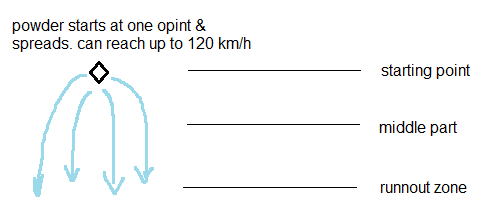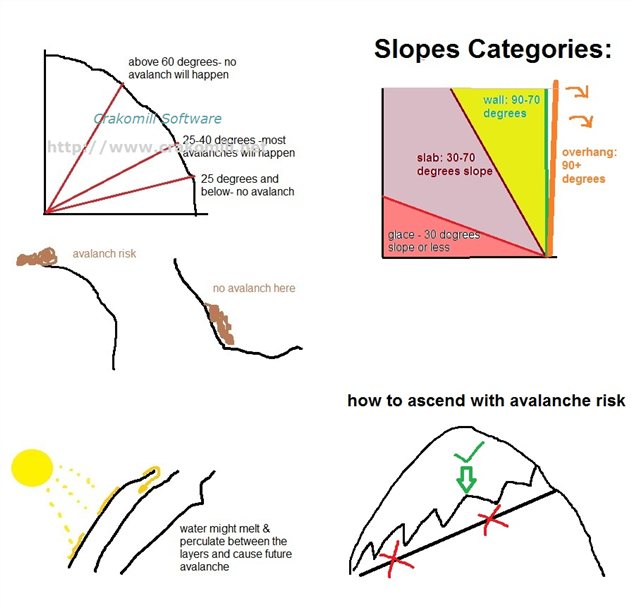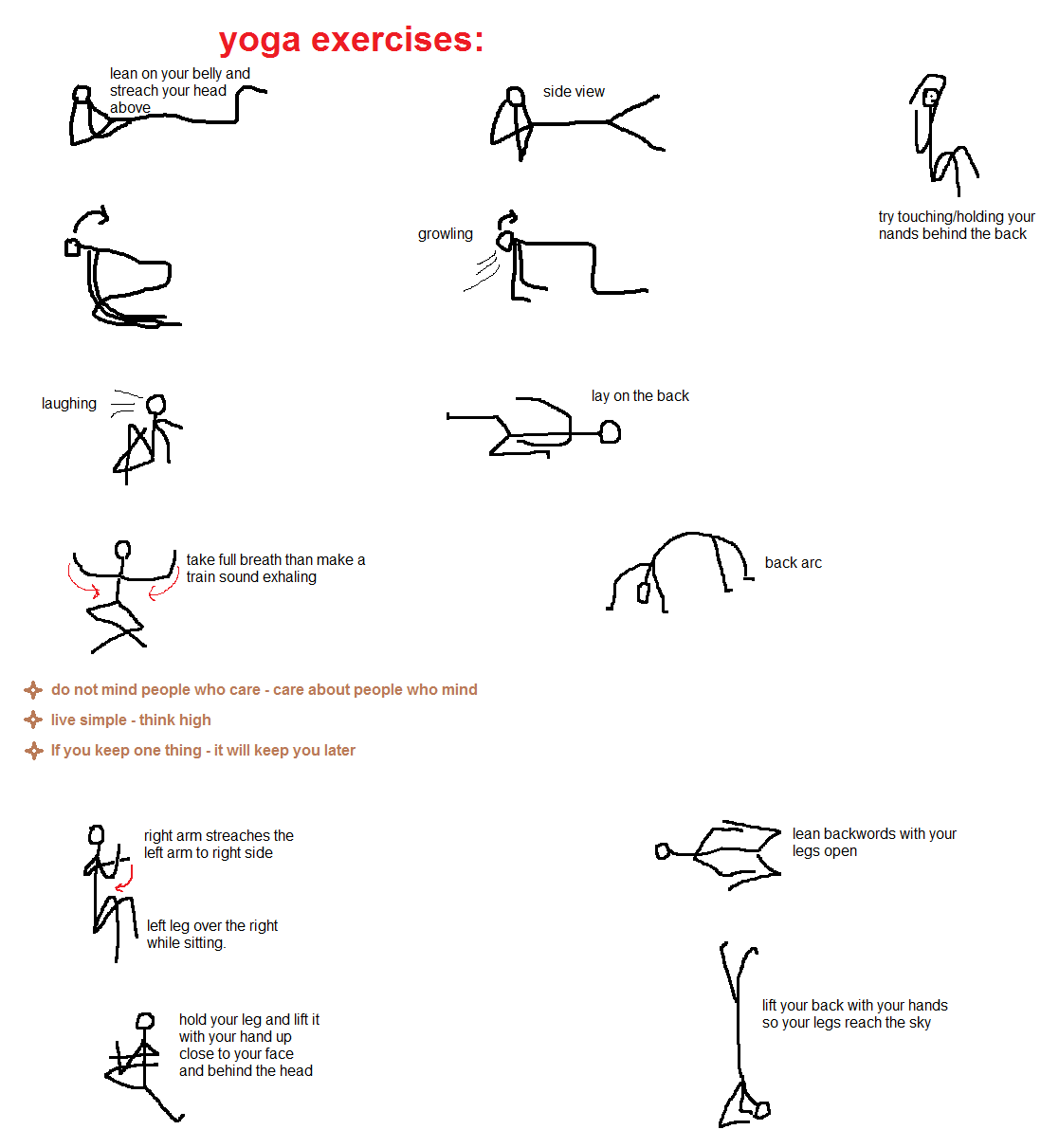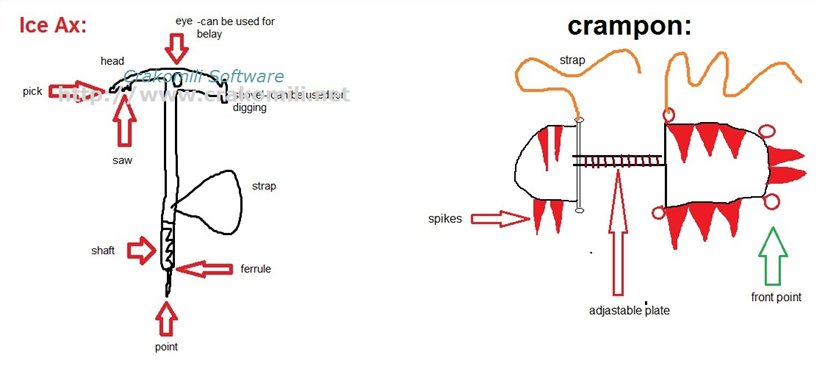Rathong Glacier Map (training area for HMI basic mountaineering course No. 283 commenced: 4/Apr/2011 for 28 days)
==========================================================================================

mountain manners:
=================
* greeting - so you will be greeted back and the others may tell you information like what is the weather there and what you may encounter.
* assume responsibility for yourself and your team action
* maintain a low profile
* respect others at the area.
* maintain steady pace.
* maintain mechanical rhythm.
* avoid jerky movements.
* avoid over heating the body. remove excess clothing (layers) after 15 min.
* ascend zigzag in steep climb.
* do not run in the mountain.
* limit intake of water.
* halt on schedule halt. do not drop out on your own.
* do not walk over growing corps.
* maintain body temperature during halt.
* during halt: clear the trek, place rucksack carefully.
* never rest with rucksack on your back.
* keep rucksack toward the hill during halt, when somebody want to pass move to the hill side - not the down side.
* do not kick stones.
* avoid noisy behavior.
* if you feel bad - do not be greedy about the summit.
* proof or ascend - take pics of the landscape from all sides of the summit or leave some objects as proof for the next climber to see.

environment protection:(recapitulation)
=================
* a fragile eco system prevent further degradation.
* minimum impact of your activities on the environment.
* develop a conversationalist attitude.
* educate fellow country men and assist in increasing awareness.
* camp site should be relatively flat. do not stay close to water so you might discharge and pollute the water.
* leave no trace.
* do not burn litter but segregate it.
* for conservation of wildlife: report poaching & sightings.
crossing an avalanche: (failure of mechanical equilibrium)
=================
1. nature of the terrain.
2. contour of the terrain.
3. the nature of the snow.
4. temperatures.
triggers of avalanche:
* weight
* cutting between two pieces
* temp
* vibrations
principle types of avalanche:
* powder snow avalanche
* avalanche of fresh wet snow
* cornice snow avalanche - wind will build a small mountain that might fall and slide down.
Rules to observe avalanche zone:
* do not go alone in an avalanche area
* negotiate the safest route or slope
* keep away from the ridge, if possible stay away from cornice. pass as high as possible
* walk zigzag on slope, don't walk diagonally.
* wear avalanche cord/transceiver (AVD- avalanche victim detector: 40m vertically, 12m horizontally) in avalanche prone area. it is a radio beacon that will point you if you get buried
* maintain silence. do not stamp your feet in the snow
* unbuckle rucksack belt in this area
* wear monkey cup and gloves in case you get buried
* keep distance of 50-100m from each other and do not tie yourself to others- if something hits you in 12m km/h it might take all group
* keep person to watch while crossing avalanche prone area
If you are caught in avalanche:
* call that other member of your party to observe your position
* discard ski sticks and rucksack (through them away)
* attempt to stay on surface by making swimming motions with arms
* if swimming action do not work- cover your face with your hands and make a cocoon position
* avalanche snow often becomes very hard as soon as it stops moving so place your hands in front of your nose
* if you are below do not waste your voice- use only when needed
* do not panic
* if you are survivor then point for search party
* mark last seen point
* search surface below last seen point
* thorough search
* probing and send for help
* first aid should consist of as many covers/blankets on each survivor so it's body temperature will not drop


Vital weather warning signs:
=================
* heavy recent snow fall (in the past 24 hours)
* wind - landing on lee slopes may result with slabs and cornices
* prolonged periods of very worm & very cold weather
Yoga:
====

Ice Ax & crampons:
=================

knots list:
=================
hitch- needs a support, knot- no support needed/
* fisherman knot for first and last man
* bow line (rescue knot)
* sheep band -different diameter ropes
* double sheep band
* figure of 8
* running clove hitch (the support is the anchor)
* reef knot (right on left,left on right)
tent pitching:
=================
* select slope or straight platform
* place door opposite side of wind direction.
* never pitch your tent near mountain stream - it can go beyond level height.
* try to locate it close to some water source.
harness:
=================
make a double ring with the sling over the harness loop then fishermen knot.
tie it around the stomach and back, close it with reef knot.
put the carbine from above to the sling we made and the harness. when walking along the glacier make a tension in the rope so if someone falls it will not pull the others.